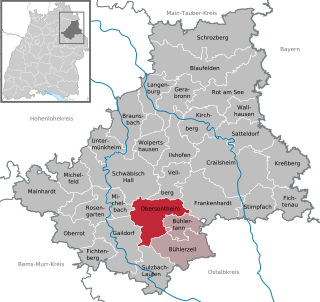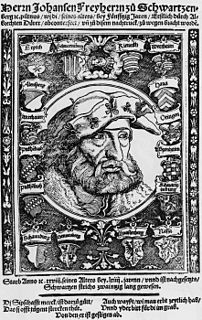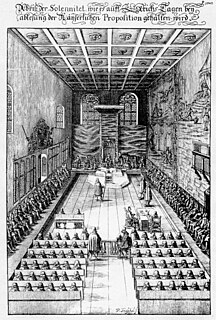
The Prince-Bishopric of Würzburg was an ecclesiastical principality of the Holy Roman Empire located in Lower Franconia west of the Prince-Bishopric of Bamberg. Würzburg had been a diocese since 743. As definitely established by the Concordat of 1448, bishops in Germany were chosen by the canons of the cathedral chapter and their election was later confirmed by the pope. Following a common practice in Germany, the prince-bishops of Würzburg were frequently elected to other ecclesiastical principalities as well. The last few prince-bishops resided at the Würzburg Residence, which is one of the grandest baroque palaces in Europe.

The Schönborn family is a noble and mediatised formerly sovereign family of the former Holy Roman Empire.

Friedrich Karl von Schönborn was the Prince-Bishop of Würzburg and Prince-Bishop of Bamberg from 1729 to 1746. He also served as Reichsvizekanzler (Vice-Chancellor) of the Holy Roman Empire from 1705 to 1734.

The Diocese of Eichstätt is a diocese of the Catholic Church in Bavaria. Its seat is Eichstätt, and it is subordinate to the archbishop of Bamberg. The diocese was erected in 745; from the Middle Ages until 1805, it was a state of the Holy Roman Empire. The current Bishop of Eichstätt is Dr. Gregor Maria Hanke, OSB; formerly the Abbot of the Benedictine Abbey of Plankstetten, he was named to the See by Pope Benedict XVI on 14 October 2006, and he was consecrated at the Cathedral of Eichstätt on 2 December 2006. The diocese covers an area of 6,025 km², with 48,9% just under half of the population is catholic.
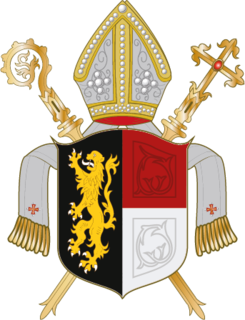
The Bishop of Gurk is the head of the Roman Catholic Diocese of Gurk, which was established in 1072 as the first suffragan bishop by Archbishop Gebhard of Salzburg in the Duchy of Carinthia.
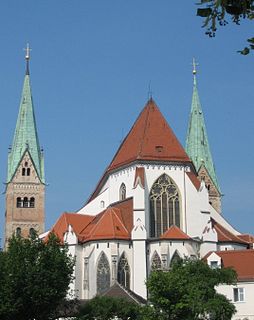
Diocese of Augsburg is a diocese of the Catholic Church in Germany. The diocese is a suffragan of the Archdiocese of Munich.
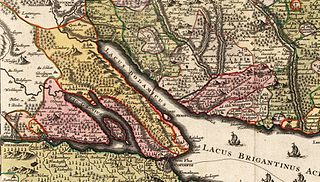
The Bishopric of Constance, or Prince-Bishopric of Constance, was a Prince-Bishopric and Imperial Estate of the Holy Roman Empire from the mid–12th century until its secularisation in 1802–1803. The much larger Roman Catholic Diocese of Konstanz existed from about 585 until its dissolution in 1821. It belonged to the ecclesiastical province of Mainz since 780/782.
Schenk is a common German and Dutch occupational surname derived from schenken and referring to the medieval profession of cup-bearer or wine server. People with this surname include:

Würzburg Cathedral is a Roman Catholic cathedral in Würzburg in Bavaria, Germany, dedicated to Saint Kilian. It is the seat of the Bishop of Würzburg and has served as the burial place for the Prince-Bishops of Würzburg for hundreds of years. With an overall length of 103 metres, it is the fourth largest Romanesque church building in Germany, and a masterpiece of German architecture from the Salian period. Notable later additions include work by Tilman Riemenschneider and Balthasar Neumann. The cathedral was heavily damaged by British bombs in March 1945 but rebuilt post-World War II.
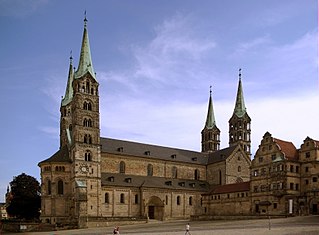
The Bamberg witch trials, which took place in Bamberg in 1626–1631, were one of a series of mass witch trials in southern Germany, contemporary with the Würzburg witch trials and others. Over an extended period these trial resulted in the executions of around 1,000 people. It belonged to the largest witch trials in history, among the largest during the Thirty Years' War, and one of the four largest witch trials in Germany alongside the Trier witch trials, the Fulda witch trials, and the Würzburg witch trial.
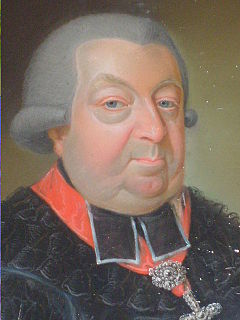
Christoph Franz von Buseck was the Roman Catholic bishop of Bamberg and the last Prince-Bishop of Bamberg.

Johann Franz Schenk von Stauffenberg (1658–1740) was Prince-Bishop of Constance from 1704 to 1740 and Prince-Bishop of Augsburg from 1737 to 1740.

Georg Marschalk von Ebnet was the Prince-Bishop of Bamberg from 1503 to 1505.

Johann Georg Zobel von Giebelstadt (1543–1580) was the Prince-Bishop of Bamberg from 1577 to 1580.

Johann Georg Fuchs von Dornheim (1586–1633) was the Prince-Bishop of Bamberg from 1623 to 1633. He was known as the "Hexenbrenner" and the "Hexenbischof" (witch-bishop) for presiding over the most intensive period of witch trials in early modern Bamberg.

Marquard Sebastian Schenk von Stauffenberg (1644–1693) was the Prince-Bishop of Bamberg from 1683 to 1693.

Gaillenreuth Castle is situated high above the Wiesent river on its upper western perimeter in the village of Burggaillenreuth. The village belongs to the borough of Ebermannstadt in the county of Forchheim in the south German state of Bavaria. All that survives is the southern part of the hill castle. As well as parts of the outer ward there is a tower house from the post-1632 period.



